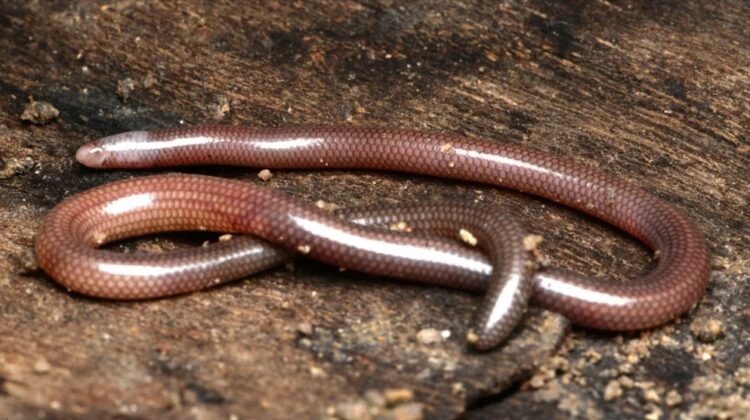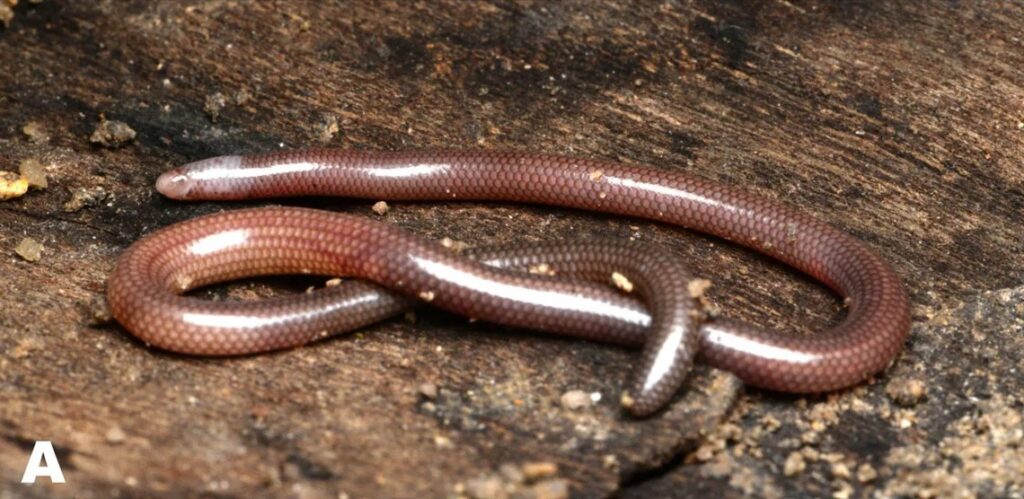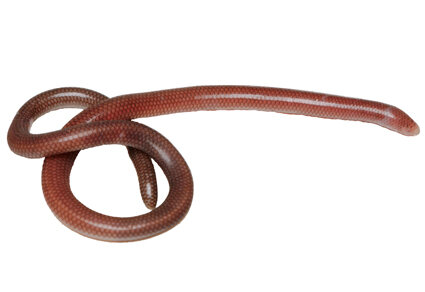
In the arid expanses of Nui Chua National Park in Vietnam, scientists stumbled upon a mysterious “limbless” creature beneath a decaying log, engaged in a quest for termites. This chance encounter led to the identification of a new species, shedding light on the unique biodiversity of the region.
Venturing into Vietnam’s “driest and hottest” province, Ninh Thuận, researchers embarked on three surveys between September 2022 and March 2023, aiming to locate a particular type of lizard known as the blind skink. Their pursuit involved seeking out yellow-bellied termites, the favored prey of these elusive lizards, and exploring the surrounding areas.
Delving into the leaves, soil, and decaying logs, the scientists unearthed seven blind skink lizards. Upon closer examination, it became evident that they had discovered a previously unknown species, subsequently named Dibamus tropcentr or the Ninh Thuận blind skink.

Characterized by a “worm-like” body reaching a length of approximately 4.6 inches, the Ninh Thuận blind skink features rudimentary eyes completely obscured by scales. Notably limbless, males possess “rudimentary” hind limbs that manifest as “flap-like structures” near their tails.
The skink’s appearance is reminiscent of an earthworm, exhibiting a pinkish-brown hue, with a lighter shade near the head transitioning to a darker coloration toward the tail. Despite its seemingly smooth, scaly texture, the skink shares an uncanny resemblance to its subterranean counterparts.
These unique creatures were observed during daylight hours, engaged in digging activities, often in proximity to yellow-bellied termites.

When handled or lifted, the lizards activated a defense mechanism by “raising their body scales,” resulting in a “somewhat wrinkled appearance.” This behavior mimics certain inedible worms, potentially deterring predators like birds.
The Ninh Thuận blind skinks were discovered at two locations within Nui Chua National Park, adding a fascinating dimension to the biodiversity of this region, known for its extreme climate conditions.
The scientific name of the newly identified species, tropcentr, pays homage to the Joint Vietnam-Russia Tropical Science and Technology Research Centre (VRTC), which has dedicated over 35 years to researching the ecology and biodiversity of Vietnam.

Identification of the new species relied on meticulous examination of scale patterns, body proportions, and other subtle physical features. While the study did not include a DNA analysis due to limited genetic data on other blind skink species, the discovery adds to our understanding of the rich and diverse ecosystems hidden within the confines of Vietnam’s dry lowland forests.
The research team, comprised of Nikita Kliukin, Tan Van Nguyen, Son Xuan Le, Andrey Bragin, Tin Trong Vo Tran, Vladislav Gorin, and Nikolay Poyarkov, has made a valuable contribution to the exploration and appreciation of Vietnam’s unique wildlife.

Leave a Reply